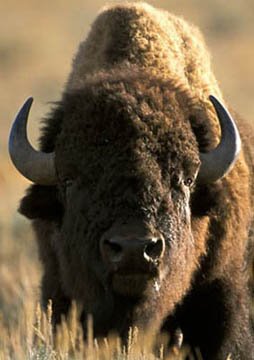 The Olympics, the Democratic Convention, and some amazing books have occupied my mind lately. More adventures to come.
The Olympics, the Democratic Convention, and some amazing books have occupied my mind lately. More adventures to come.
Thursday, August 28, 2008
Hi There!
 The Olympics, the Democratic Convention, and some amazing books have occupied my mind lately. More adventures to come.
The Olympics, the Democratic Convention, and some amazing books have occupied my mind lately. More adventures to come.
Thursday, August 14, 2008
Planetwalker and Ameritrekker
 John Francis and his ever-present banjo during his journey in the 1970s.
John Francis and his ever-present banjo during his journey in the 1970s. Peter Jenkins and Cooper, 1973.
Peter Jenkins and Cooper, 1973.On the heels of yapping about Grant Cunningham's epic trail journey in my last post, I may as well tell about a couple of books written by other long-distance walkers. I came upon the book Planetwalker quite by accident few months ago in a book store. Having not heard of it before, I quickly paged through it and made a mental note to maybe buy it later. After doing some resarch on the planetwalker, John Francis, I knew I had to read why he did no traveling in motorized vehicles for 22 years and stopped talking for 17 years. After witnessing the tragedy of a huge oil spill in San Francisco Bay in 1971 and its devastating effects on the environment and wildlife, Francis decided to crusade for environmantal awareness, as well as world peace. His WEBSITE tells of his efforts. Check out the 30 Minutes Bay Area video on the website. I takes a bit to download but is worth a watch. What attracted me most to Francis was his devotion to his cause and his amazing network of friends and well wishers who gave him shelter and other aid during his trek.
A Planetwalker movie is in negotiations, and actor Will Smith has expressed great interest in playing the role of John Francis. Francis himself would like Morgan Freeman to play his father in the movie. Anything those two actors would be in should be well worth a view.
As soon as I am finished reading Planetwalker, I will follow another grand walk in Peter Jenkins' A Walk Across America. This journey of a "discouraged hippie" also happened in the 1970s and later became a bestselling book. Paging through the book, I came across a photo of the author holding his deceased dog, Cooper, above a freshly dug grave while on the journey. I know it will be sad to read about the author's close companion and traveling partner.
Tuesday, August 12, 2008
Extreme Trail Trip
Well, he did it. Grant Cunningham, a member of one of my running clubs, backpacked the entire 2,175 miles of the Appalachian Trail, from Georgia to Maine. That's about 2000 miles more than I have completed. Grant started in March and finished at the end of July. I'm extremely jealous. See the blog of his adventures in my "Buffaloes and Friends" links at right. I hope he'll post a final entry about his journey. Quite an accomplishment, Grant.
Wednesday, August 06, 2008
The Suffering of a "Stalwart Icon"
 A buffalo relaxes in the grass despite the nearby smoke of a large fire currently burning at Yellowstone National Park.
A buffalo relaxes in the grass despite the nearby smoke of a large fire currently burning at Yellowstone National Park.A fire near the LeHardy Rapids in Yellowstone National Park that began last week has torched about 8,500 acres of the park. The blaze, according to a fire official, has good potential for growth. This summer marks the 20th anniversary of Yellowstone's most devastating fire, which scorched about 37 percent of the park. The final flames of the 1988 inferno, actually a series of fires caused by lightning and human carelessness, weren't extinguished till November of that year, but a Yellowstone visitor in the spring of 1989 left this description of the smoked-over area:
"For most of our time in the park, there was a heavy pall of smoke in the air. Elk and bison in varying stages of consumption stood forlornly in the gray smoke and overcast, breathing hard for precious oxygen. For me, the saddest memory is of the noble bison. These stalwart icons are in no small part symbolic of our national heritage. They are a vision of strength and stamina, but the fire took a toll on them, if not from the flames themselves then from the deadly smoke that lingered long after the flames were abated.
"Granted the smoke took a grim reaping on many animals in the park, but it was the bison that appeared to suffer most. Driving throughout the park, we would see them standing, head down and gasping. Often they stood near geysers and fumaroles for added warmth to ease their pain.
Many of these bison displayed bloody froth draining from their nostrils. Rangers informed us this was an indication that carbon particles from the smoky air had accumulated to a harmful level in their lungs, resulting in not only pneumonia but abrasion to soft lung tissue from the simple act of breathing.
"As the problem progressed, these animals could not even forage for food because of shortness of breath. In time they simply dropped in their tracks and remained there forevermore."
Only nine buffaloes actually perished during the 1988 fire, but it must have been painful to watch the suffering wildlife. Let's hope the current fire, believed to be started by a downed power line, is extinguished as quickly as possible.
"For most of our time in the park, there was a heavy pall of smoke in the air. Elk and bison in varying stages of consumption stood forlornly in the gray smoke and overcast, breathing hard for precious oxygen. For me, the saddest memory is of the noble bison. These stalwart icons are in no small part symbolic of our national heritage. They are a vision of strength and stamina, but the fire took a toll on them, if not from the flames themselves then from the deadly smoke that lingered long after the flames were abated.
"Granted the smoke took a grim reaping on many animals in the park, but it was the bison that appeared to suffer most. Driving throughout the park, we would see them standing, head down and gasping. Often they stood near geysers and fumaroles for added warmth to ease their pain.
Many of these bison displayed bloody froth draining from their nostrils. Rangers informed us this was an indication that carbon particles from the smoky air had accumulated to a harmful level in their lungs, resulting in not only pneumonia but abrasion to soft lung tissue from the simple act of breathing.
"As the problem progressed, these animals could not even forage for food because of shortness of breath. In time they simply dropped in their tracks and remained there forevermore."
Only nine buffaloes actually perished during the 1988 fire, but it must have been painful to watch the suffering wildlife. Let's hope the current fire, believed to be started by a downed power line, is extinguished as quickly as possible.
Subscribe to:
Comments (Atom)










